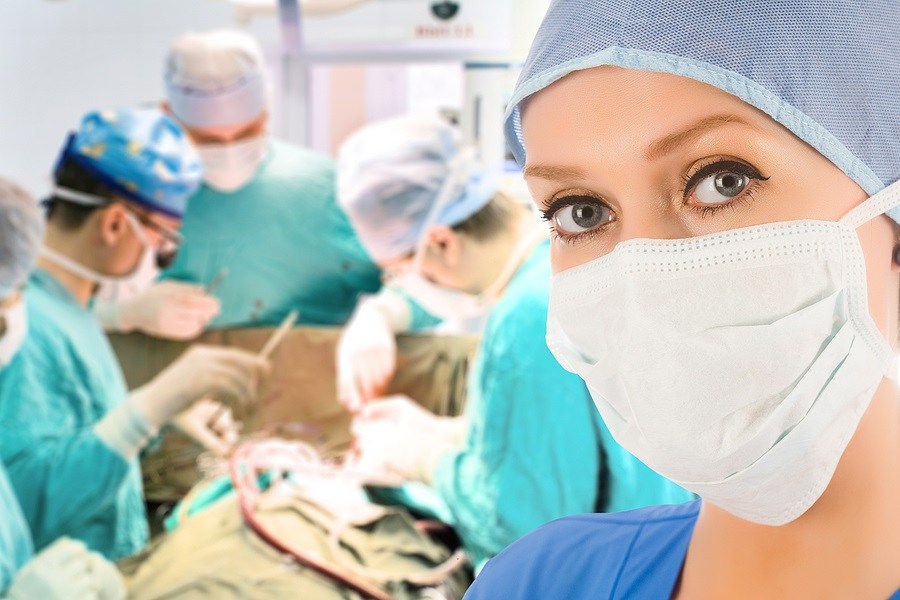The Great Unmasking: Studies in the Medical Literature Show FEWER Infections in Surgery when Medical Staff Do NOT Wear Masks


Several studies in the medical literature that compared infection rates during surgery with surgeons wearing masks with surgeries where staff did not wear masks showed no benefit to wearing masks, and in many cases the infection rate was LOWER when NOT wearing masks.
Comments by Brian Shilhavy
Editor, Health Impact News
Early on during the COVID Plandemic, when mask mandates began to be rolled out, which incidentally only began after California Governor Gavin Newsom’s nearly 1 BILLION dollar purchase of Chinese-made masks began clearing customs and making its way into the U.S. marketplace (See: Is California Governor Newsom Leading the Communist Takeover of America?), I was told one weekend in June that I could not enter an open air Farmer’s Market without a face mask.
I refused, and entered the market anyway, since it was on public property. The young man who tried to prevent my entry followed me through the market to make sure I did not try to purchase anything, and I tried to engage him in an intellectual debate on the rationale for wearing face masks outside in a wide open space.
I told him that many medical doctors were exposing the dangers of wearing face masks for too long, to which he replied:
“Oh really? So when a doctor performing brain surgery is wearing a face mask, he’s wrong?”
I came to a full stop, looked him directly in the eyes and said:
“Do you see anyone around here performing brain surgery? Yes, in a hospital surgery setting, a face mask is appropriate, but not outside in the fresh air like this.”
Now, I am not so sure that my response was accurate after all, as even that belief, the belief that surgical masks are necessary during surgery, is now being challenged.
Beliefs are interesting things. Those who make a conscious effort to look at why they believe something as true, will usually find that more than 90% of the time, we believe something to be true because someone we respect told us so, or such a large group of people believe it to be true that we just assume it to be true as well. Seldom is it because we took the time ourselves to do the actual research to see if our beliefs actually align with the data that is available.
That was back in June of this year (2020), and today at the mid-point of August, I am changing my belief that surgical masks always prevent hospital infections during surgery, based on new evidence that has been revealed to me through my search for the truth.
A man in Australia who claims he went to medical school, has challenged my belief by providing links to his own research, with many of those links going directly to the U.S. National Institute of Health’s website, which shows that when studies were conducted comparing the outcome of infections in the surgery room with hospital staff that wore surgical masks during the surgery, with surgeries conducted by hospital staff who did not wear surgical masks during surgery, that not only did masks prove not to decrease infections, infection rates in many cases were fewer in the instances where no masks were worn.
So where did this idea originate?

Back to researching for the answer. If you have researched this yourself and have come up with some answers, please share in the comments.

Pack of blue disposable surgical face mask produced in China
Also, has anyone ever done a chemical analysis on these face masks coming in from China to see just what people are breathing into their lungs when wearing them for so long?
In the meantime, I have already unmasked the master mind behind COVID and all this madness, and if you have not read that yet, it is time to do so.
Unmasking Who is Behind the Plandemic and Rioting to Usher in the New World Order
Studies of Surgical Masks Efficacy
by Chris of the family Masters
As a person who went to medical school, I was shocked when I read Neil Orr’s study, published in 1981 in the Annals of the Royal College of Surgeons of England.
Dr. Orr was a surgeon in the Severalls Surgical Unit in Colchester. And for six months, from March through August 1980, the surgeons and staff in that unit decided to see what would happen if they did not wear masks during surgeries.
They wore no masks for six months, and compared the rate of surgical wound infections from March through August 1980 with the rate of wound infections from March through August of the previous four years.
And they discovered, to their amazement, that when nobody wore masks during surgeries, the rate of wound infections was less than half what it was when everyone wore masks.
Their conclusion: “It would appear that minimum contamination can best be achieved by not wearing a mask at all” and that wearing a mask during surgery “is a standard procedure that could be abandoned.”
I was so amazed that I scoured the medical literature, sure that this was a fluke and that newer studies must show the utility of masks in preventing the spread of disease.
But to my surprise the medical literature for the past forty-five years has been consistent: masks are useless in preventing the spread of disease and, if anything, are unsanitary objects that themselves spread bacteria and viruses.
- Ritter et al., in 1975, found that “the wearing of a surgical face mask had no effect upon the overall operating room environmental contamination.”
- Ha’eri and Wiley, in 1980, applied human albumin microspheres to the interior of surgical masks in 20 operations. At the end of each operation, wound washings were examined under the microscope. “Particle contamination of the wound was demonstrated in all experiments.”
- Laslett and Sabin, in 1989, found that caps and masks were not necessary during cardiac catheterization. “No infections were found in any patient, regardless of whether a cap or mask was used,” they wrote. Sjøl and Kelbaek came to the same conclusion in 2002.
- In Tunevall’s 1991 study, a general surgical team wore no masks in half of their surgeries for two years. After 1,537 operations performed with masks, the wound infection rate was 4.7%, while after 1,551 operations performed without masks, the wound infection rate was only 3.5%.
- A review by Skinner and Sutton in 2001 concluded that “The evidence for discontinuing the use of surgical face masks would appear to be stronger than the evidence available to support their continued use.”
- Lahme et al., in 2001, wrote that “surgical face masks worn by patients during regional anaesthesia, did not reduce the concentration of airborne bacteria over the operation field in our study. Thus they are dispensable.”
- Figueiredo et al., in 2001, reported that in five years of doing peritoneal dialysis without masks, rates of peritonitis in their unit were no different than rates in hospitals where masks were worn.
- Bahli did a systematic literature review in 2009 and found that “no significant difference in the incidence of postoperative wound infection was observed between masks groups and groups operated with no masks.”
- Surgeons at the Karolinska Institute in Sweden, recognizing the lack of evidence supporting the use of masks, ceased requiring them in 2010 for anesthesiologists and other non-scrubbed personnel in the operating room. “Our decision to no longer require routine surgical masks for personnel not scrubbed for surgery is a departure from common practice. But the evidence to support this practice does not exist,” wrote Dr. Eva Sellden.
- Webster et al., in 2010, reported on obstetric, gynecological, general, orthopaedic, breast and urological surgeries performed on 827 patients. All non-scrubbed staff wore masks in half the surgeries, and none of the non-scrubbed staff wore masks in half the surgeries. Surgical site infections occurred in 11.5% of the Mask group, and in only 9.0% of the No Mask group.
- Lipp and Edwards reviewed the surgical literature in 2014 and found “no statistically significant difference in infection rates between the masked and unmasked group in any of the trials.” Vincent and Edwards updated this review in 2016 and the conclusion was the same.
- Carøe, in a 2014 review based on four studies and 6,006 patients, wrote that “none of the four studies found a difference in the number of post-operative infections whether you used a surgical mask or not.”
- Salassa and Swiontkowski, in 2014, investigated the necessity of scrubs, masks and head coverings in the operating room and concluded that “there is no evidence that these measures reduce the prevalence of surgical site infection.”
- Da Zhou et al., reviewing the literature in 2015, concluded that “there is a lack of substantial evidence to support claims that facemasks protect either patient or surgeon from infectious contamination.”
Schools in China are now prohibiting students from wearing masks while exercising. Why? Because it was killing them. It was depriving them of oxygen and it was killing them.
At least three children died during Physical Education classes — two of them while running on their school’s track while wearing a mask. And a 26-year-old man suffered a collapsed lung after running two and a half miles while wearing a mask.
Mandating masks has not kept death rates down anywhere. The 20 U.S. states that have never ordered people to wear face masks indoors and out have dramatically lower COVID-19 death rates than the 30 states that have mandated masks.
Most of the no-mask states have COVID-19 death rates below 20 per 100,000 population, and none have a death rate higher than 55. All 13 states that have death rates higher 55 are states that have required the wearing of masks in all public places. It has not protected them.
“We are living in an atmosphere of permanent illness, of meaningless separation,” writes Benjamin Cherry in the Summer 2020 issue of New View magazine. A separation that is destroying lives, souls, and nature.
Comment on this article at Health Impact News.
See Also:
Booming Face Mask Business in U.S. Creating Instant Millionaires Using Government Funds to Buy Masks from China
Having problems receiving our newsletters? See:







